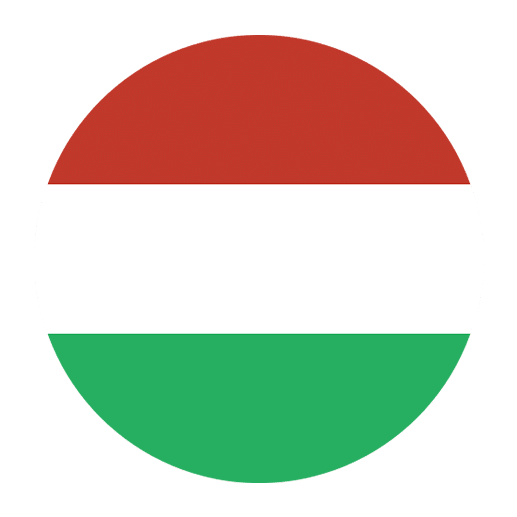Hungarian, known as Magyar in its native form, is a unique and fascinating language that belongs to the Finno-Ugric group of the Uralic language family. Its distinctiveness from Indo-European languages presents both challenges and rewards for language learners. As Hungarian is not widely spoken outside of Hungary, learning it can be particularly challenging without the right resources and environment. This is where language institutes play a pivotal role. In this article, we will explore the essential role of language institutes in teaching Hungarian, the methodologies they employ, and the benefits they offer to students.
The Importance of Structured Learning Environments
Language institutes provide a structured learning environment that is often difficult to replicate through self-study or informal learning settings. This structure is essential for a language like Hungarian, which has complex grammar rules, unique vocabulary, and pronunciation that can be challenging for non-native speakers.
Consistency and Regularity
One of the primary advantages of enrolling in a language institute is the consistency and regularity they offer. Classes are scheduled at regular intervals, which helps in maintaining a steady pace of learning. This is crucial for mastering Hungarian, as irregular study habits can lead to gaps in knowledge and understanding.
Access to Qualified Instructors
Language institutes employ qualified instructors who are often native speakers or have a high level of proficiency in Hungarian. These instructors bring a wealth of knowledge and experience to the classroom, providing students with expert guidance. They can offer insights into the nuances of the language that are often not covered in textbooks or online resources.
Customized Learning Plans
Another significant advantage of language institutes is their ability to offer customized learning plans tailored to the individual needs of students. This is particularly beneficial for Hungarian learners, as different students may have varying levels of proficiency and learning goals.
Initial Assessment
Most language institutes conduct an initial assessment to gauge the current proficiency level of the student. This helps in placing the student in the appropriate level, whether they are beginners, intermediate, or advanced learners.
Personalized Feedback
Instructors at language institutes provide personalized feedback, which is invaluable for language learners. This feedback helps students identify their strengths and weaknesses, allowing them to focus on areas that need improvement. For example, a student struggling with Hungarian verb conjugations can receive targeted practice and support from their instructor.
Comprehensive Curriculum
Language institutes offer a comprehensive curriculum that covers all aspects of language learning, including speaking, listening, reading, and writing. This holistic approach is essential for mastering Hungarian, as proficiency in one area often supports and reinforces proficiency in others.
Grammar and Syntax
Hungarian grammar and syntax are notoriously complex, with features such as agglutination, vowel harmony, and a rich case system. Language institutes provide systematic instruction in these areas, helping students build a solid foundation. For example, students learn to recognize and use the various cases in Hungarian, which is crucial for constructing grammatically correct sentences.
Vocabulary Building
Vocabulary acquisition is another critical component of language learning. Language institutes use a variety of techniques to help students expand their Hungarian vocabulary, including thematic vocabulary lists, flashcards, and context-based learning. This ensures that students not only learn new words but also understand how to use them in context.
Interactive Learning
Interactive learning is a cornerstone of modern language instruction, and language institutes are well-equipped to provide this. Interactive learning techniques engage students actively, making the learning process more enjoyable and effective.
Group Activities
Language institutes often organize group activities such as discussions, role-plays, and collaborative projects. These activities encourage students to practice speaking and listening in a supportive environment. For Hungarian learners, this can be particularly beneficial as it provides opportunities to practice pronunciation and intonation with peers.
Technology Integration
Many language institutes incorporate technology into their teaching methods. This includes the use of language learning software, online resources, and multimedia tools. For example, students might use apps to practice Hungarian vocabulary or watch Hungarian films to improve their listening skills. Technology also allows for interactive exercises and instant feedback, enhancing the learning experience.
Cultural Immersion
Understanding the cultural context of a language is crucial for achieving fluency. Language institutes often offer cultural immersion programs that help students gain a deeper understanding of Hungarian culture, traditions, and social norms.
Language and Culture Classes
In addition to language instruction, many institutes offer classes on Hungarian history, literature, and culture. These classes provide valuable insights that enrich the language learning experience. For instance, learning about Hungarian festivals and traditions can help students understand common expressions and idioms used in everyday conversation.
Study Abroad Programs
Some language institutes offer study abroad programs that provide students with the opportunity to live and study in Hungary. Immersing oneself in the language and culture on a daily basis accelerates learning and helps students achieve a higher level of fluency. Study abroad programs often include homestays with Hungarian families, language exchange partnerships, and cultural excursions.
Supportive Learning Community
A supportive learning community is essential for language learners, and language institutes excel in creating such an environment. Being part of a community of learners can provide motivation, encouragement, and a sense of belonging.
Peer Support
Language institutes foster a sense of camaraderie among students. Peer support can be incredibly motivating, as students can share their experiences, challenges, and successes with one another. For Hungarian learners, this support network can be particularly valuable, as it provides opportunities to practice speaking and to receive feedback from fellow students.
Extracurricular Activities
Many language institutes offer extracurricular activities such as language clubs, conversation groups, and cultural events. These activities provide additional opportunities for students to practice their Hungarian in a relaxed and informal setting. For example, a Hungarian film night or a cooking class featuring traditional Hungarian dishes can provide a fun and engaging way to practice the language.
Challenges and Solutions in Teaching Hungarian
While language institutes offer numerous benefits, teaching Hungarian comes with its own set of challenges. Understanding these challenges and the solutions that language institutes employ can provide insights into the effectiveness of their teaching methods.
Challenge: Complexity of Grammar
Hungarian grammar is complex and can be daunting for learners. The language features 18 cases, extensive use of suffixes, and rules for vowel harmony, among other complexities.
Solution: Incremental Learning
Language institutes address this challenge by breaking down grammar instruction into manageable segments. They use incremental learning techniques, starting with basic structures and gradually introducing more complex concepts. This step-by-step approach helps students build confidence and competence over time.
Challenge: Limited Exposure Outside the Classroom
For many learners, finding opportunities to practice Hungarian outside the classroom can be difficult, especially if they do not live in a Hungarian-speaking community.
Solution: Language Exchange Partnerships
Many language institutes facilitate language exchange partnerships, pairing students with native Hungarian speakers. These partnerships provide valuable opportunities for real-life practice and cultural exchange. Additionally, institutes may offer online conversation sessions with native speakers, ensuring that students have ample opportunities to practice their skills.
Challenge: Pronunciation and Intonation
Hungarian pronunciation and intonation can be challenging for non-native speakers, particularly those whose native languages have different phonetic systems.
Solution: Phonetic Training
Language institutes often incorporate phonetic training into their curriculum. This includes exercises that focus on individual sounds, stress patterns, and intonation. Instructors provide corrective feedback and use audio-visual aids to help students master Hungarian pronunciation.
The Future of Language Institutes in Teaching Hungarian
As the world becomes increasingly interconnected, the demand for learning less commonly taught languages like Hungarian is likely to grow. Language institutes will continue to play a crucial role in meeting this demand, adapting their methods and resources to address the evolving needs of students.
Embracing Technology
The integration of technology in language instruction will continue to expand. Language institutes are likely to adopt more advanced tools, such as virtual reality (VR) and artificial intelligence (AI), to create immersive and interactive learning experiences. For example, VR can simulate real-life environments where students can practice Hungarian in context, while AI can provide personalized feedback and adaptive learning pathways.
Expanding Access
Language institutes will continue to seek ways to make Hungarian language instruction more accessible to a broader audience. This includes offering online courses, which can reach students who may not have access to a physical language institute. Online platforms can provide flexible learning options, allowing students to study at their own pace and according to their own schedules.
Fostering Global Connections
As globalization continues to bring people from different cultures and backgrounds together, language institutes will play a vital role in fostering global connections. By teaching Hungarian, these institutes not only help preserve and promote the language but also contribute to cross-cultural understanding and collaboration.
Conclusion
The role of language institutes in teaching Hungarian is multifaceted and indispensable. They provide structured and consistent learning environments, employ qualified instructors, and offer customized learning plans. Their comprehensive curricula cover all aspects of language learning, from grammar and vocabulary to speaking and listening skills. Interactive learning techniques, cultural immersion programs, and supportive learning communities further enhance the effectiveness of language instruction.
By addressing the unique challenges of teaching Hungarian and embracing future advancements in technology and accessibility, language institutes will continue to be at the forefront of language education. For anyone looking to learn Hungarian, enrolling in a language institute offers a pathway to success, providing the tools, resources, and support needed to achieve fluency and a deeper appreciation of this fascinating language.

